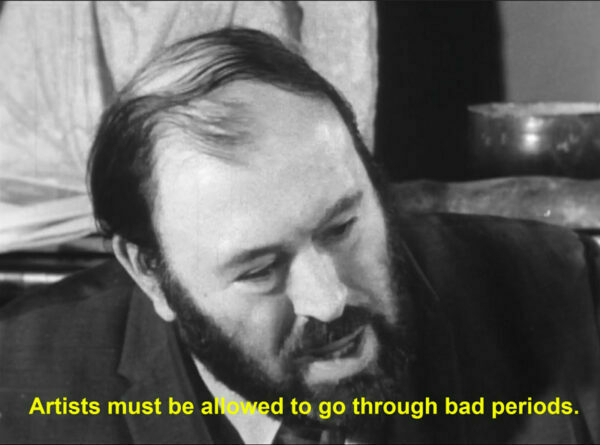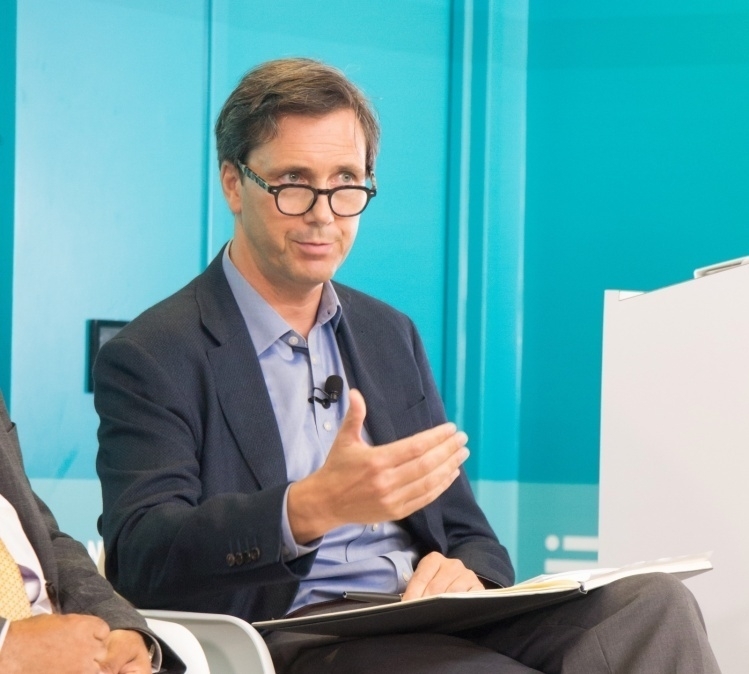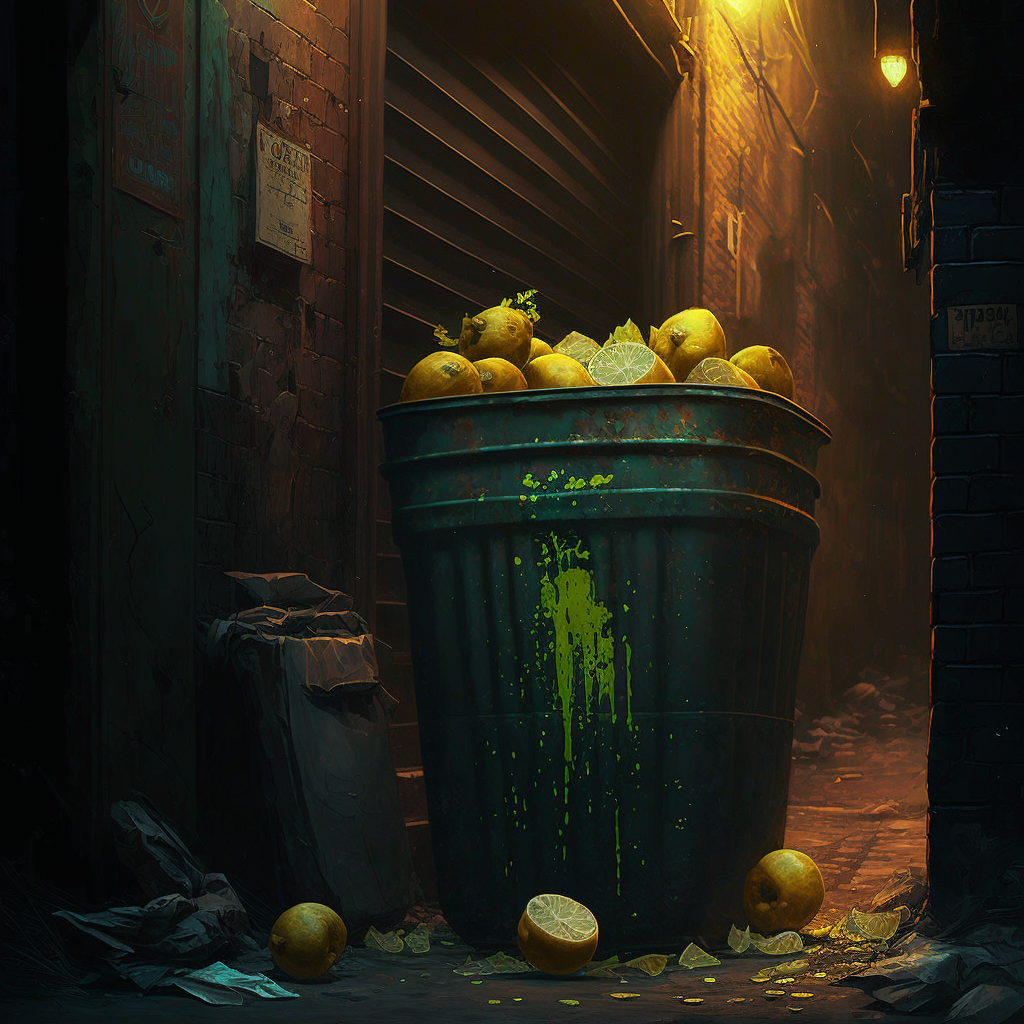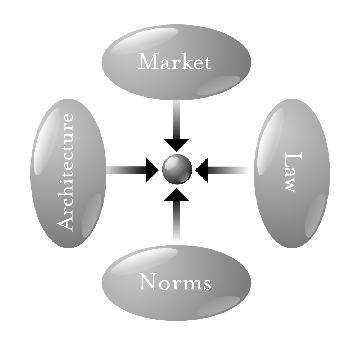Would you survive in medieval Europe?
Realistically, I’m never going to watch an hour-long YouTube video which is mainly a talking head. I mean, I’m into history, but I’m not that into it.
Thankfully, Open Culture has summarised some of the most important points. If you’re the kind of person who watches a lot of YouTube, then maybe you want to add this to your queue?

In the new video above, history Youtuber Premodernist provides an hour’s worth of advice to the modern preparing to travel back in time to medieval Europe — beginning with the declaration that “you will very likely get sick.”Source: Advice for Time Traveling to Medieval Europe: How to Staying Healthy & Safe, and Avoiding Charges of Witchcraft | Open CultureThe gastrointestinal distress posed by the “native biome” of medieval European food and drink is one thing; the threat of robbery or worse by its roving packs of outlaws is quite another. “Crime is rampant” where you’re going, so “carry a dagger” and “learn how to use it.” In societies of the Middle Ages, people could only protect themselves by being “enmeshed in social webs with each other. No one was an individual.” And so, as a traveler, you must — to put it in Dungeons-and-Dragons terms — belong to some legible class. Though you’ll have no choice but to present yourself as having come from a distant land, you can feel free to pick one of two guises that will suit your obvious foreignness: “you’re either a merchant or a pilgrim.”
Image: DALL-E 3
Remember distinct music scenes and culinary traditions? Yeah, they're coming back.
Anything that Anil Dash writes is worth reading and this, his first article for Rolling Stone, is no different. I haven’t quoted it here, but I love the first paragraph. What goes around, comes around, eh?

[T]his new year offers many echoes of a moment we haven’t seen in a quarter-century. Some of the most dominant companies on the internet are at risk of losing their relevance, and the rest of us are rethinking our daily habits in ways that will shift the digital landscape as we know it. Though the specifics are hard to predict, we can look to historical precedents to understand the changes that are about to come, and even to predict how regular internet users — not just the world’s tech tycoons — may be the ones who decide how it goes.Source: The Internet Is About to Get Weird Again | Rolling Stone[…]
We are about to see the biggest reshuffling of power on the internet in 25 years, in a way that most of the internet’s current users have never seen before. And while some of the drivers of this change have been hyped up, or even over-hyped, a few of the most important changes haven’t gotten any discussion at all.
[…]
Consider the dramatic power shift happening right now in social media. Twitter’s slide into irrelevance and extremism as it decays into X has hastened the explosive growth of a whole host of newer social networks. There’s the nerdy vibes of the noncommercial Mastodon communities (each one with its own set of Dungeons and Dragons rules to play by), the raucous hedonism of Bluesky (like your old Tumblr timeline at its most scandalous), and the at-least-it’s-not-LinkedIn noisiness of Threads, brought to you by Instagram, meaning Facebook, meaning Meta. There are lots more, of course, and probably another new one popping up tomorrow, but that’s what’s great about it. A generation ago, we saw early social networks like LiveJournal and Xanga and Black Planet and Friendster and many others come and go, each finding their own specific audience and focus. For those who remember a time in the last century when things were less homogenous, and different geographic regions might have their own distinct music scenes or culinary traditions, it’s easy to understand the appeal of an online equivalent to different, connected neighborhoods that each have their own vibe. While this new, more diffuse set of social networks sometimes requires a little more tinkering to get started, they epitomize the complexity and multiplicity of the weirder and more open web that’s flourishing today.
[...]I’m not a pollyanna about the fact that there are still going to be lots of horrible things on the internet, and that too many of the tycoons who rule the tech industry are trying to make the bad things worse. (After all, look what the last wild era online lead to.) There’s not going to be some new killer app that displaces Google or Facebook or Twitter with a love-powered alternative. But that’s because there shouldn’t be. There should be lots of different, human-scale alternative experiences on the internet that offer up home-cooked, locally-grown, ethically-sourced, code-to-table alternatives to the factory-farmed junk food of the internet. And they should be weird.
Image: DALL-E 3
We already have solutions for a lot of problems, we just don’t use them
A belated Happy New Year, and what better way to start off 2024 than by this reminder that quite a lot of what’s holding us back in the world is political will and societal coordination.

I remember growing up with that same old adage of how you could be the next scientist to invent a cure for cancer, or a solution to climate change, or whatever. What they don’t tell you is that we already have solutions for a lot of problems, we just don’t use them. Sometimes this is because the solution is too expensive, but usually it’s because competing interests create a tragedy of the commons. Most problems in the modern age aren’t complicated engineering problems, they’re the same problem: coordination failure.Source: We Could Fix Everything, We Just Don’t | Erik McClure[…]
We actually have a cure for blood cancer now, by the way. Like, we’ve done it. It’s likely that a similar form of immunotherapy will generalize to most forms of cancer. Unfortunately, the only approved gene therapy we have is for sickle-cell disease and costs $2 million per patient, so most people in America simply assume they will never be able to afford any of these treatments, even if they were dying of cancer, because insurance will never cover it. This is actually really bad, because if nobody can afford the treatment, then biotech companies won’t bother investing into it, because it’s not profitable! We have built a society that can’t properly incentivize CURING CANCER. This is despite the fact that socialized healthcare is a proven effective strategy (as long as the government doesn’t sabotage it). We could fix this, we just don’t.
[…]
It’s January 1st of the new year, and with all these people wishing each other a “better year”, I am here to remind you that it will only get worse unless we do something. Society getting worse is not something you are hallucinating. It cannot be fixed by you biking to work, or winning the lottery. We are running on the fumes of our wild technological progress of the past 100 years, and our inability to build social systems that can cooperate will destroy civilization as we know it, unless we do something about it.
Image: DALL-E 3
Bill Gates on why AI agents are better than Clippy
While there’s nothing particularly new in this post by Bill Gates, it’s nevertheless a good one to send to people who might be interested in the impact that AI is about to have on society.
Gates compares AI agents to Clippy which, he says, was merely a bot. After going through all of the advantages there will be to AI agents acting on your behalf, Gates does, to his credit, talk about privacy implications. He also touches on social conventions and how human norms interact with machine efficiency.
The thing that strikes me in all of this is something that Audrey Watters discussed a few months ago in relation to fitness technologies: will these technologies make us more like to live ‘templated lives’. In other words, are they helping support human flourishing, or nudging us towards lives that make more revenue for advertisers, etc.?

Agents will affect how we use software as well as how it’s written. They’ll replace search sites because they’ll be better at finding information and summarizing it for you. They’ll replace many e-commerce sites because they’ll find the best price for you and won’t be restricted to just a few vendors. They’ll replace word processors, spreadsheets, and other productivity apps. Businesses that are separate today—search advertising, social networking with advertising, shopping, productivity software—will become one business.Source: AI is about to completely change how you use computers | Bill Gates[…]
How will you interact with your agent? Companies are exploring various options including apps, glasses, pendants, pins, and even holograms. All of these are possibilities, but I think the first big breakthrough in human-agent interaction will be earbuds. If your agent needs to check in with you, it will speak to you or show up on your phone. (“Your flight is delayed. Do you want to wait, or can I help rebook it?”) If you want, it will monitor sound coming into your ear and enhance it by blocking out background noise, amplifying speech that’s hard to hear, or making it easier to understand someone who’s speaking with a heavy accent.
[…]
But who owns the data you share with your agent, and how do you ensure that it’s being used appropriately? No one wants to start getting ads related to something they told their therapist agent. Can law enforcement use your agent as evidence against you? When will your agent refuse to do something that could be harmful to you or someone else? Who picks the values that are built into agents?
[…]
But other issues won’t be decided by companies and governments. For example, agents could affect how we interact with friends and family. Today, you can show someone that you care about them by remembering details about their life—say, their birthday. But when they know your agent likely reminded you about it and took care of sending flowers, will it be as meaningful for them?
The Societal Side-eye
I’ll turn 43 next month. I seem to have a lot more grey hair than other people my age. Some people act towards me as if I’m old. Perhaps I am in their eyes.
Fair enough, some days I wake up and I feel a million years old, but most of the time my fitness regime means that I feel pretty awesome.
This article is about ignoring the ‘societal side-eye’ and doing badass things anyway. It’s something we all need to remember as we age: don’t be beholden to other people’s expectation of what’s appropriate.

You and I are Way Too Old to let a societal side-eye sideline us from a badass life, however we define it.Source: You’re Too Old to Care About the Societal Side Eye When You Want to Be a Badass | Too Old for This Sh*tWho says we’re not supposed to even countenance the idea of learning to in-line skate. Or skateboard. Or paraglide. Or try trapeze work. Or aerial silks. Or whatever it was that got away from us as youths, and now beckons us back if we would only put in the training time. When does a timeline run out?
If we do such things, particularly if we sport grey hair, we are subjected to
“OH ISN’T THAT SO CUUUUUUUUUTE!”
[…]
Humans are a judgmental lot. We love to make fun of, mock and ridicule, especially those who are doing things we don’t have the guts to try. When some tiny Black woman well over a hundred heads out onto the track and runs a record time, we call her sweet or cute while she is engaging in serious badassery.
[…]
It’s hard enough to age. It’s far harder to age in a ageist society which is eager to denounce and mock those of us who defy expectations and insist on writing our own history, full of whatever badassery fills our hearts.
The real threat to manhood: remaining children
This is an interesting article that, to be honest, I expected a bit more from. It comments on some obvious things such as how problematic a rigid and joyless form of ultra-masculinity can be, as well as being careful not to say that discipline isn’t important.
While I appreciate that the author, Dave Holmes, doesn’t use the term ‘toxic masculinity’ (which I think doesn’t really mean anything any more) what I do think he could have developed further is the very last line. In it, he mentions that the real threat to manhood is us “staying children” which is a much more interesting area to explore.
The world is more individualised, gamified, and commercialised than ever before. Masculinity, as a concept, is therefore an idea to be bought and sold. The version we need to fix the world is not the version that gains the most likes on social media; it’s one that is confident, self-reflective, and biased towards helping others.

You can be forgiven for not noticing that men aren’t men anymore, because men are always not men anymore. “Men aren’t men anymore”—like “nobody younger than me wants to work” and “this isn’t real music”—has been said every day in every language since we’ve had days and languages. It’s a particular concern in America, where men haven’t been men anymore from the jump. Almost certainly one of our founding fathers told his son, “Don’t leave this house without your wig, stockings, and frock coat—I didn’t raise a sissy.”Source: Can You Still Say ‘Be A Man’? | Esquire[…]
“Men are not men anymore” is ancient; “men are not men anymore, buy this and fix that,” slightly newer. But this is a much bleaker time, a time of “men are not men anymore, smash that subscribe button.” A generation of boys looking for rules has met a generation of creeps looking for an audience: Jordan Peterson, Steven Crowder, Andrew Tate. Guys who offer a rigid and joyless version of masculinity. Guys whose brand says, “I have learned how to throttle everything that is exuberant and playful within myself to become someone else’s version of what a man is; what’s wrong with you?” Guys who have chosen a car for its color and will never forgive themselves for it.
[…]
This is not to say you should throw away rules, or that playing to a person’s insecurity isn’t sometimes the right move. I quit smoking at 30, cold turkey, unless I was in a bar, or walking home after a good meal, or near someone who asked, “Would you like a cigarette?” My friend Lee picked up on this. “For someone who has quit smoking,” he said, “you are doing a lot of smoking.” I protested, “It’s just hard in certain situations.” Lee looked me in the eye and said, “Have you tried being a man?” Haven’t had a cigarette since.
Arthur Schlesinger Jr. and Lee aren’t saying independent thinking and discipline are virtues for men as opposed to women. They are just virtues. Rules for good living. Like we aim to provide in the Esquire of 2023. It’s time we stop being so worried about becoming women and start focusing on the real threat to manhood: staying children.
Happiness vs GDP
Making the world a happier, fairer, safer place seems like an idea that most people can get behind. But how do you do it? Although there’s a relationship between average self-reported happiness of a population and increased GDP per capita, there are notable outliers.
So, what to do? Focus on other numbers as well. This article talks about measuring ‘Wellbys’ or ‘well-being-life-adjusted-years’ which involves placing a lot more emphasis on subjective numbers.
The trouble, as anyone who has visited a hospital in England will know, is that self-reported data while useful can be very problematic. For example, when I go into hospital, I know that they will ask me to rate my pain on a scale of 1-10. Being a reasonably stoic kind of person, I used to keep that number low, which not only kept me at the back of the line for being seen, but meant they were less likely to give me painkillers.
Guess what I’ve learned to do? Yep, game the system. People respond to incentives, so although trying to make single numbers go up and to the right might make life easier for those intervening in systems, it doesn’t make those interventions any more effective.
Instead, I’d like to see the focus more on something like the Human Development Index (HDI) which, not only has been around for a while, but is a composite of statistics designed to increase human flourishing.
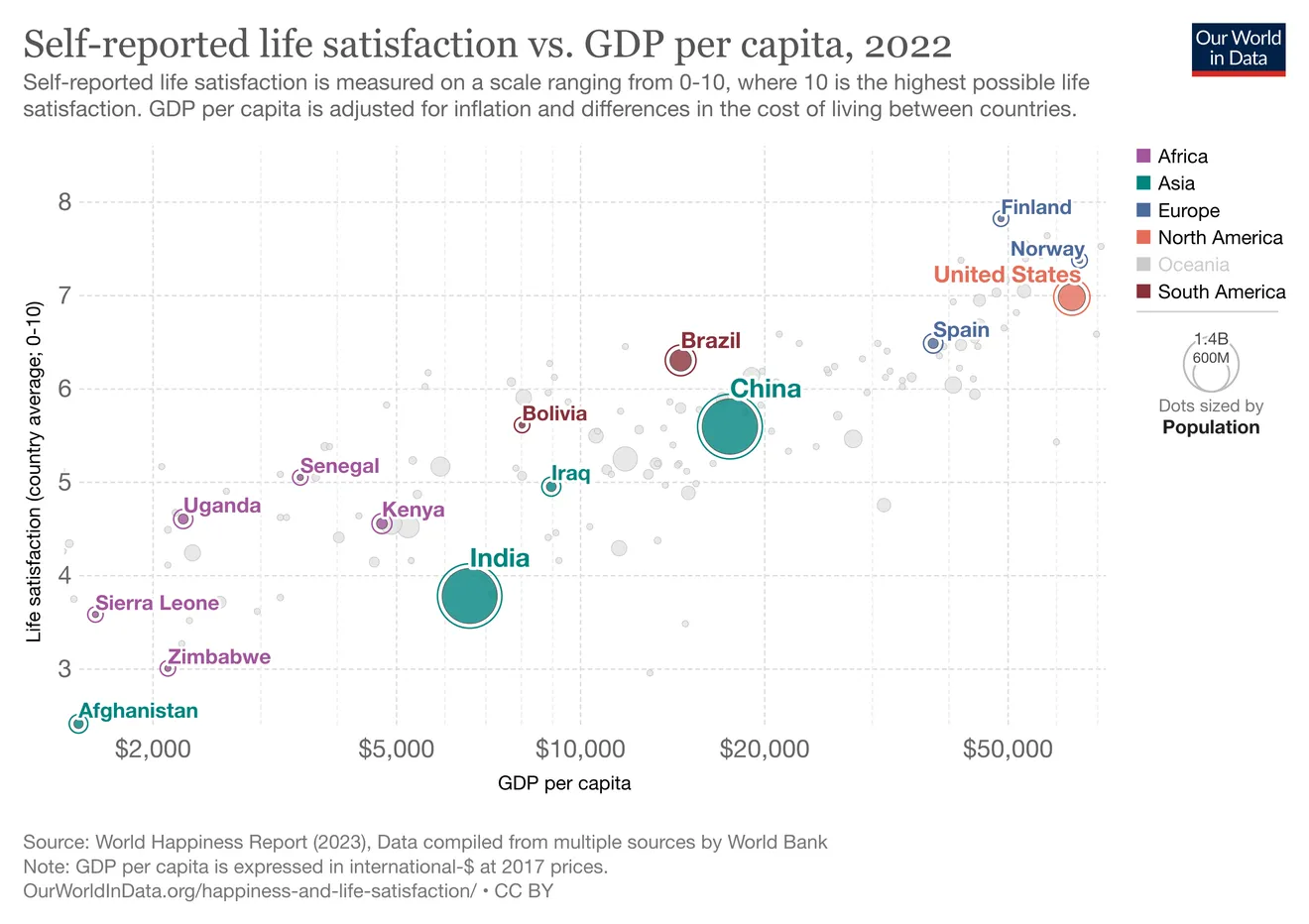
As we’ve gathered more data on the happiness of different populations, it’s become clear that increasing wealth and health do not always go hand in hand with increasing happiness. By the economists’ objective measures, people in rich countries like the US should be doing great — and yet Americans are only becoming more miserable. And people in some higher-GDP European countries like Portugal and Italy report lower life satisfaction than people in lower-GDP Latin American countries.Source: Make people happier — not just wealthier and healthier | VoxWhat’s going on here? How do we explain the gaps in life satisfaction that objective metrics like GDP don’t explain?
Nowadays, a growing chorus of experts argues that helping people is ultimately about making them happier — not just wealthier or healthier — and the best way to find out how happy people are is to just ask them directly. This camp says we should focus a lot more on subjective well-being: how happy people are, or how satisfied they are with their lives, based on what they say matters most to them — not just based on objective metrics like GDP. Subjective well-being can tell us things that objective metrics can’t.
[…]
Instead, [Michael} Plant [who leads the Happier Lives Institute] argues we should compare how much good different things do in a single “currency” — specifically, how many well-being-adjusted life years, or Wellbys, they produce. Producing one Wellby means increasing life satisfaction by one point (on the 0-10 life satisfaction scale) for one year. It’s a metric that some economists, including those behind the World Happiness Report, are coming to embrace. If we were to evaluate every policy in terms of how many Wellbys it produces, that would allow for direct apples-to-apples comparisons.
“I’m pretty bullish about just using well-being as the [single] measure,” Plant told me.
Is this the end of the 'extremely online' era?
As I mentioned in a recent post, you can’t win a war against system designed to destroy your attention. You have to try a different strategy. One of those is disengaging, which is what Thomas J Bevan is noticing, and advocating for, in this post.
I like his mention of going to a place where he noticed there was “something off” and he realised nobody was using their phone. Not because they weren’t allowed to, but because they were having too much of a good time to bother with them.
<img class=“alignnone size-full wp-image-8855” src=“https://thoughtshrapnel.com/wp-content/uploads/2023/10/DALL·E-2023-10-26-21.10.14-Vector-art-showing-a-massive-pile-of-smartphones-stacked-high-with-a-single-small-flower-growing-from-the-top-symbolising-hope-and-a-return-to-auth-1.png” alt=“Vector art showing a massive pile of smartphones stacked high, with a single, small flower growing from the top, symbolising hope and a return to authenticity.
" width=“1024” height=“1024” />
The consequences of life lived online have bled through into the real world and this has happened because we have allowed them to. It’s a cliché to say that real life is now a temporary reprieve from the online, as opposed to the other way around. We pay the price for all of this via boarded up shops, closing pubs, empty playgrounds and silent streets as each individual stays at home each night, enchanted by the blue flicker of their own little screen feeding them their own walled in world of news and content and edutainment.Source: The End of the Extremely Online Era | Thomas J BevanI believe it will end, this so-called way of life. Not through the Silicon Valley oligarchs spontaneously developing a conscience or being legislated into acting with a modicum less sociopathy. I don’t believe people will be frightened into changing how they act or suddenly shamed into putting their phones down for once in their lives. Such interventions don’t work with most addicts and more and more people are legitimately hooked on their devices than we are currently willing to countenance. No, I think this will all end, as T.S Eliot said, with a whimper. People will simply lose interest and walk away. Because the internet now is boring. People spend all day scrolling because they are trying to find what isn’t there anymore. The authenticity, the genuinely human moments, the fun.
Image: Created with DALL-E 3
Yuval Noah Harari on the post-truth revolutionary right
Friend and collaborator Bryan Mathers recommended this episode of The Rest is Politics: Leading to me. While I’m a regular listener to the main podcast, which features only Alastair Campbell and Rory Stewart, I hadn’t previously bothered with the ones where they interview others.
This one with Yuval Noah Harari is great. It’s the second part of a two-part interview. In the first, recorded in August, Harari talks about the situation in Israel. In this second one, he zooms out a bit to talk about politics more generally, AI, and society.
The thing that struck me, about 5-10 minutes in, was his point about the left and right of politics not making sense any more. That’s something that others have said before. But his analysis was fascinating: the right has largely abandoned the role of being guardians of tradition to weaponise ‘truth’, which has led to the left being in the awkward position of custodian. That’s why everything feels topsy-turvy.
(also, I’m really pleased to have discovered pod.link to share podcast episodes in a non-platform-specific way as easily as song.link)
(also also, I found out about a podcast search engine call Listen Notes recently!)
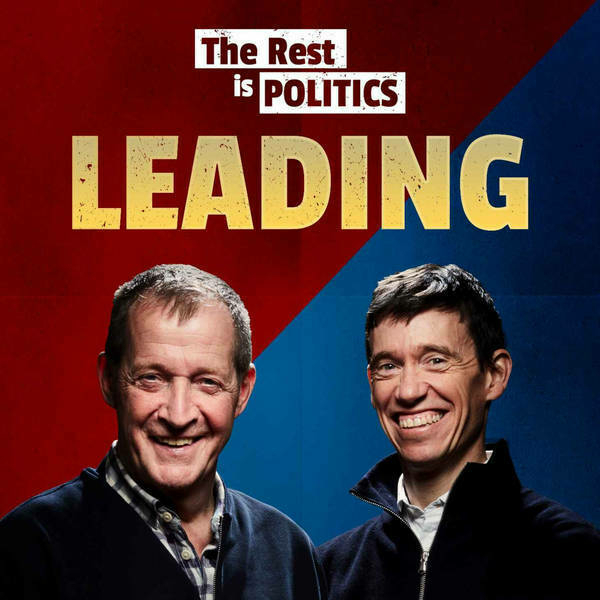
Rory Stewart and Alastair Campbell, hosts of Britain's biggest podcast (The Rest Is Politics), have joined forces once again for their new interview podcast, ‘Leading’.Every Monday, Rory and Alastair interrogate, converse with, and interview some of the world's biggest names - from both inside and outside of politics - about life, leadership, or leading the way in their chosen field.Whether they're sports stars, thought-leaders, presidents or internationally-recognised religious figures, Alastair and Rory lift the lid on the motivation, philosophy and secrets behind their career.Tune in to 'Leading' now to hear essential conversation from some of the world's most enthralling individuals.Source: The Rest is Politics: Leading
We need to talk about AI porn
Thought Shrapnel is a prude-free zone, especially as the porn industry tends to be a technological innovator. It’s important to say, though, that the objectification of women and non-consensual generation of pornography is not just a bad thing but societally corrosive.
By now, we’re familiar with AI models being able to create images of almost anything. I’ve read of wonderful recent advances in the world of architecture, for example. Some of the most popular AI generators have filters to prevent abuse, but of course there are many others.
As this article details, a lot of porn has already been generated. Again, prudishness aside relating to people’s kinks, there are all kind of philosophical, political, legal, and issues at play here. Child pornography is abhorrent; how is our legal system going to deal with AI generated versions? What about the inevitable ‘shaming’ of people via AI generated sex acts?
All of this is a canary in the coalmine for what happens in society at large. And this is why philosophical training is important: it helps you grapple with the implications of technology, the ‘why’ as well as the what. I’ve got a lot more thoughts on this, but I actually think it would be a really good topic to discuss as part of the next season of the WAO podcast.

“Create anything,” Mage.Space’s landing page invites users with a text box underneath. Type in the name of a major celebrity, and Mage will generate their image using Stable Diffusion, an open source, text-to-image machine learning model. Type in the name of the same celebrity plus the word “nude” or a specific sex act, and Mage will generate a blurred image and prompt you to upgrade to a “Basic” account for $4 a month, or a “Pro Plan” for $15 a month. “NSFW content is only available to premium members.” the prompt says.Source: Inside the AI Porn Marketplace Where Everything and Everyone Is for Sale | 404 Media[…]
Since Mage by default saves every image generated on the site, clicking on a username will reveal their entire image generation history, another wall of images that often includes hundreds or thousands of AI-generated sexual images of various celebrities made by just one of Mage’s many users. A user’s image generation history is presented in reverse chronological order, revealing how their experimentation with the technology evolves over time.
Scrolling through a user’s image generation history feels like an unvarnished peek into their id. In one user’s feed, I saw eight images of the cartoon character from the children’s’ show Ben 10, Gwen Tennyson, in a revealing maid’s uniform. Then, nine images of her making the “ahegao” face in front of an erect penis. Then more than a dozen images of her in bed, in pajamas, with very large breasts. Earlier the same day, that user generated dozens of innocuous images of various female celebrities in the style of red carpet or fashion magazine photos. Scrolling down further, I can see the user fixate on specific celebrities and fictional characters, Disney princesses, anime characters, and actresses, each rotated through a series of images posing them in lingerie, schoolgirl uniforms, and hardcore pornography. Each image represents a fraction of a penny in profit to the person who created the custom Stable Diffusion model that generated it.
[…]
Generating pornographic images of real people is against the Mage Discord community’s rules, which the community strictly enforces because it’s also against Discord’s platform-wide community guidelines. A previous Mage Discord was suspended in March for this reason. While 404 Media has seen multiple instances of non-consensual images of real people and methods for creating them, the Discord community self-polices: users flag such content, and it’s removed quickly. As one Mage user chided another after they shared an AI-generated nude image of Jennifer Lawrence: “posting celeb-related content is forbidden by discord and our discord was shut down a few weeks ago because of celeb content, check [the rules.] you can create it on mage, but not share it here.”
Did people in the past look older for their age?
I’m 42 but look much younger than my father did at his age. And I’m sure that he looked younger than my grandfather did at his age. This is an interesting article about why.
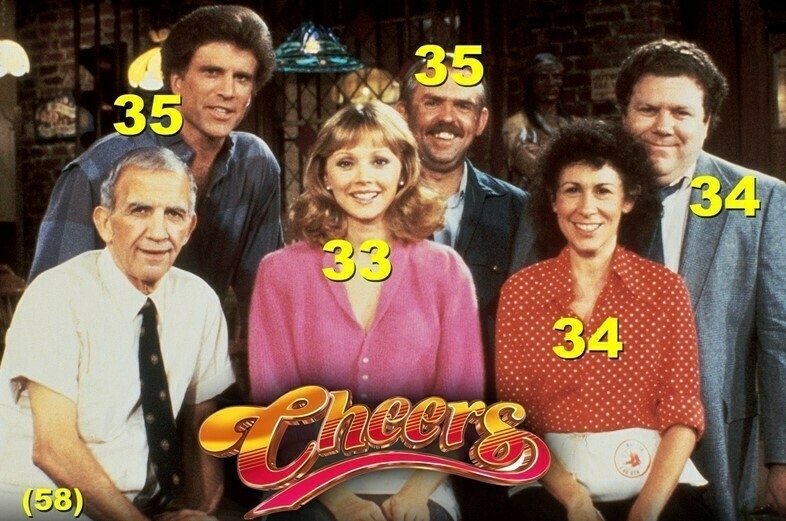
There’s a meme that makes the rounds every so often. It’s a group shot of the cast of 80s sitcom Cheers, with the ages of each actor displayed on the image. Every time it comes back around, people express surprise and disbelief that this group of what looks to be middle-aged folk are actually in their twenties and thirties. With his greying moustache and receding hairline, John Ratzenberger looks far older than what we might now imagine a 30-something man to look like – current 35-year-old actors Michael Cera and Nicholas Braun, for example, look significantly younger in comparison.Source: Why did people in the past look so much older? | Dazed[…]
While factors like diet, skincare and aesthetic procedures can make us physically look younger – hairstyles, make-up and fashion also play a role in how youthful we appear. While someone with 2023-esque micro bangs may scream young to us, we associate photos of 80s hairstyles and big shoulder pads with being older, even if the person in the image is the same age as us. This is partly because of how we consider trendy hairstyles and fashion of that time to be outdated.
[…]
Today we might be obsessed with preserving our youth, but this wasn’t always the case. In past decades, popular trends often existed to make young people appear more sophisticated and bold. “The dramatic nature of [80s] hairstyles often conveyed a sense of confidence and authority, which could be associated with older individuals,” hairdresser Gwenda Harmon says. “Certain hairstyles of the 1980s actually made some youth appear older due to their bold and sophisticated nature.”
Bad work
Not just artists - we all go through life’s ups and downs, good periods and bad. Right now is the least tolerant time since I’ve been alive. Everyone’s supposed to be on it 24/7.
Viewed in the context of the episode, Sylvester is talking, specifically, about the “professionalization” and “commercialization” of art, and basically the hype machine of the art world.Source: Artists must be allowed to make bad work | Austin Kleon
How to hold a 'preferendum'
I like this idea a lot. The only caveat is that we could potentially be ruled by “the will of the people” in a way that degenerates into the worst kind of populism.
However, I get the feeling that if this happens often enough, in practice it would be at worst benign, and at best a net benefit to democracy.
The preferendum is a highly promising instrument for public decision-making, especially when it is preceded by a well-designed, deliberative group of citizens representative of the public at large and succeeded by clear government action. It can be integrated within existing structures of public participation and might help bridge the gap between deliberative and representative processes.An explanation of how it would work:
At the polling station during the next general election, you get not one but two ballot papers. The first is your usual list of candidates and their political parties. The second is something new — a document with 30 different proposals that you are invited to analyze, one after the other.Source: Democracy’s Missing Link | NOEMAUnderneath each idea it says “strongly disagree,” “disagree,” “agree,” “strongly agree,” etc. It feels like one of those online questionnaires you’ve seen many times before.
At the bottom of the form, you are invited to highlight the five proposals you care about most. Every citizen in your country on voting day would be looking at the same list and doing what you are doing in the voting booth: rating and ranking proposals. The goal is to establish a list of shared priorities.
The process looks like a referendum, a process you might’ve participated in before. But where a referendum asks you for a straight yes or no answer to a certain question, this new process — this preferendum — has a much richer interface for indicating your policy preferences. You get to translate your individual preferences into the collective priorities of your community.
The problem with feminism is not that it has gone too far. It is that it has not gone far enough.
I listened to a podcast episode earlier this week entitled What the World of Psychology Gets Wrong About Men. After a few minutes, I considered turning it off, as I felt that the guest, Dr. John Barry, was about to stray into “men are under attack” territory.
But I kept listening, and I was wrong. It was a really balanced, well-structured conversation which pointed out how problematic the term “toxic masculinity” is when it’s applied to any behaviour we don’t like that’s exhibited by men. That’s not how the phrase originated.
This article is a review of Richard Reeves' new book. What struck me about it was the discussion of how young men’s veneration of hugely problematic figures such as Jordan Peterson, Andrew Tate, and Donald Trump is a symptom of male alienation. “Women’s lives have been recast. Men’s lives have not.”
In his new book, 'Of Boys and Men', Richard Reeves argues that the [crisis of masculinity] is structural. Society has undergone profound cultural and economic changes in the past few decades and many of them have left men—especially working-class men—disoriented and demoralized. As certain structural barriers that used to hinder women have been removed, women have proven their “natural advantage” in several areas, including in our colleges and universities. The structural disadvantages faced by men, meanwhile, have only become more entrenched during the same period. Several rounds of globalization, more outsourcing of traditionally “male” sectors like heavy industry, increasing automation, and greater workplace competition from women meant that, for many men, the economic picture has been getting bleaker by the year.Source: Have Men Become Culturally Redundant? | Commonweal MagazineAs a result, many men are struggling to fulfill their own outmoded expectations of what a man should be. “The problem with feminism, as a liberation movement, is not that it has ‘gone too far,’” Reeves writes. “It is that it has not gone far enough”—that is, it has not succeeded in replacing traditional models of masculinity with something more adequate to our current circumstances. The Western male is stuck in a culture of masculinity that is now desperately mismatched with his material reality. “Women’s lives have been recast,” Reeves writes. “Men’s lives have not.” Men have been consigned to “cultural redundancy.”
[…]
Addressing the kind of male disadvantages that Reeves catalogs does not mean ignoring or excusing inequalities that favor men over women. It’s possible, Reeves writes, to “hold two thoughts in our head at once.” Indeed, it’s urgent that we do so.
Cambrian governance models
I think it’s fair to say that this article features ‘florid prose’ but the gist is that we should want society to be as complex as possible. This allow innovation to flourish and means we can solve some of the knottiest problems facing our world.
However, we’re hamstrung by issues around transnational governance, and particularly in the digital realm.
To summarise, we are traversing an epochal change and we lack the institutional capacity to complete this transformation without imploding. We could well fail, and the consequences of failure at this juncture would be catastrophic. However, we can collectively rise to the challenge and an exciting assemblage of subfields is emerging to help. We can fix the failed state that is the Internet if we approach building tech with institutional principles, and an Internet that delivers on its cooperative promise of deeper, denser institutional capacity is what we need as a planetary civilisation.Source: The Internet Transition | Robin BerjonWe don’t need a worldwide technical U.N. to figure this out. Rather, we need transnational topic-specific governance systems that interact with one another wherever they connect and overlap but that do not control one another, and that exercise subsidiarity to one another as well as to more local institutions. Yes, it will be a glorious mess — a Cambrian mess — but we will be collectively smarter for it.
Four forces that constrain our actions
‘Pathetic Dot’ is not a great name for a theory, and the diagram on the Wikipedia page isn’t the best, but Christina Bowen reminded me of it during an introductory conversation yesterday.
I can’t find it again quickly, but this also reminds me of a discussion I saw about how credit scores can exert almost as much unseen social control over people in the West as very visible social control mechanisms in more authoritarian countries.
The pathetic dot theory or the New Chicago School theory was introduced by Lawrence Lessig in a 1998 article and popularized in his 1999 book, Code and Other Laws of Cyberspace. It is a socioeconomic theory of regulation. It discusses how lives of individuals (the pathetic dots in question) are regulated by four forces: the law, social norms, the market, and architecture (technical infrastructure).Source: Pathetic dot theory | WikipediaLessig identifies four forces that constrain our actions: the law, social norms, the market, and architecture. The law threatens sanction if it is not obeyed. Social norms are enforced by the community. Markets through supply and demand set a price on various items or behaviors. The final force is the (social) architecture. By that Lessig means “features of the world, whether made, or found”; noting that facts like biology, geography, technology and others constrain our actions. Together, those four forces are the totality of what constrains our action, in fashion both direct and indirect, ex post and ex ante.
[…]
The theory can be applied to many aspects of life (such as how smoking is regulated), but it has been popularized by Lessig’s subsequent usage of it in the context of the regulation of the Internet.
Brexit Britain = hungry kids
As a former teacher, I almost cried reading this. Can someone with some authority and leadership stand up and say not only was Brexit a terrible idea, but the current government’s fiscal “strategy” will absolutely break this country?
Children are so hungry that they are eating rubbers or hiding in the playground because they can’t afford lunch, according to reports from headteachers across England.Source: Schools in England warn of crisis of ‘heartbreaking’ rise in hungry children | The Guardian[…]
One school in Lewisham, south-east London, told the charity about a child who was “pretending to eat out of an empty lunchbox” because they did not qualify for free school meals and did not want their friends to know there was no food at home.
Community food aid groups also told the Observer this week that they are struggling to cope with new demand from families unable to feed their children. “We are hearing about kids who are so hungry they are eating rubbers in school,” said Naomi Duncan, chief executive of Chefs in Schools. “Kids are coming in having not eaten anything since lunch the day before. The government has to do something.”
The unintended consequences of photography
Some good points in this photo essay, including photography leading to greater compassion as well as political influence.
Photographs were more than just pictures. While the inventors never intended more than to capture an image, the medium turned into a social force with far-reaching effects.Source: 5 Unintended Consequences of Photography | The Saturday Evening Post
